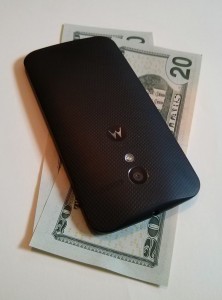Promising Signs For Smarter Wireless: Better Cheap Phones, Smoother WiFi Substitution
 I have a crazy request for the wireless industry: I want to see the carriers provide a fast, reliable signal to my phone–and not much else.
I have a crazy request for the wireless industry: I want to see the carriers provide a fast, reliable signal to my phone–and not much else.
I don’t need a wireless carrier to pick my phone for me, any more than I need my Internet provider to sell me a laptop. And if they can provide quicker, cheaper service over WiFi instead of leased mobile-broadband frequencies, even going as far as transmitting voice calling and text messaging as packets of data, that’s fine with me too.
A couple of recent developments suggest the wireless business’s slow movement away from its locked-down status quo is picking up speed.
One is the increasing quantity and quality of budget-priced phones. When T-Mobile announced almost a year ago that it would switch to unsubsidized pricing, my hope at the time was that a service that didn’t punish people who brought their own phones would goose the market for manufacturers selling directly to customers.
I can’t say the unlocked, unsubsidized business has blown up since then. But it is getting busier. With the Lumia 520, Nokia has built a good entry-level Windows Phone device that goes for only $100 and change; in the $300-and-up range, Google’s Nexus 4 (my own phone) and the new Nexus 5 compete effectively with smartphones that sell for twice as much.
And in January, Google’s Motorola subsidiary plans to ship the Moto G Android phone for only $179 unlocked. That’s an attention-getting price even compared to the fake, subsidized numbers you see in ads and some news stories.
The other is the notable improvement in WiFi-offloading options.
The most aggressive example of that was a second-class alternative only six months ago, Republic Wireless.
At the time, this Sprint reseller’s WiFi-first approach to wireless service offered an appealing $19/month rate but suffered greatly by offering users an ancient phone running an obsolete version of Android, slow mobile broadband when off WiFi, zero support for multimedia messaging, and no way to have calls smoothly transfer from WiFi to cellular.
But over the last few weeks, Republic has addressed many of those concerns. It now sells Motorola’s Moto X for $299, immensely superior to the tired old Motorola Defy XT it still offers. That phone can send and receive multimedia messages. It can use Sprint’s LTE network instead of just 3G. And when I’ve tested a loaner Moto X by walking out of WiFi range, the phone stayed on the line.
This upgraded service does cost more, at $40 a month for unlimited calling and texting, plus 5 gigabytes of full-speed data service. You can trim that substantially if you can live without LTE or if you’re blessed with WiFi in enough places.
The fact that a service like Republic exists at all is a credit to the wireless industry’s tolerance of resellers–it’s a more experimentation-friendly place than you’d think, especially if you look past the dominant carriers.
Those incumbents may not decide that it’s worthwhile to switch to unsubsidized prices or follow Republic’s model of making voice yet another data service in a much cheaper bundle. (The industry as a whole is moving towards offloading more broadband to WiFi using a standard called WiFi Passpoint; its first commercial trial started at O’Hare Airport in September.)
But they are going to have to respond somehow to lower and increasingly visible prices for hardware and service, and “see how long we’ve been around” won’t suffice.








